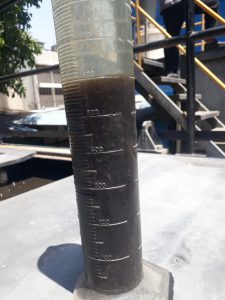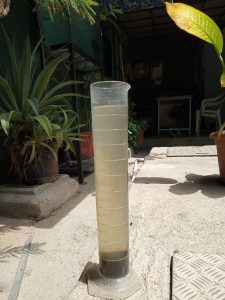Biomass development in hospital STP with MiCroBial Aqua

Background
Ruby Hospital is one of the best and popular hospital in India located in pune, maharashtra. Ruby Hospital popularly known as Ruby Hall Clinic. It was established by K.B Grant in small nursing home in 1959 in the bungalow. Today Ruby Hall Clinic boasts of 500 inpatient bed including 130 intensive care beds with staff strength of 150 consultants, 500 panel of doctors and paramedical staff. Ruby Hall Clinic generate about 40,000 liters of wastewater coming from different department of hospital like operation. theater, Toilets, Urinals and equipment washing. This waste water treated at STP.
Objectives of validation program was to demonstrate the effectiveness of MiCroBial FOG & MiCroBial Aqua by developing biomass and sustain that biomass to improve wastewater quality and to provide plant stability along with odor control from STP.
Unit Description –
STP has collection tank, aeration tank, clarifier and filtration system with treated tank. This STP treats 40,000 liters of wastewater with daily flow of 40,000 liters/day.
Dosing Program –
Recommended Product – MiCroBial Aqua
Volume of wastewater – 40,000 liters/day
Product quantity required – 200 gms/day
Fresh water required – 60 liters/day
Dosing point – Inlet of collection tank
Mode of application – Application thru dosing tank of 100 liters capacity tank
Implementation Protocol –
Before start of dosing of MiCroBial Aqua, test samples were taken for testing from inlet and Outlet point. Implementation team added 200 gms of MiCroBial Aqua product in 60 liters of fresh water and kept it for 24 hrs for activation purpose. Activated solution was dosed into inlet point of collection tank over the period of 24 hrs. Dosing of activated solution was started in such as way that dosing of 60 liters of solution should match with daily flow of wastewater into collection tank. It was also recommended to add 100 gms of DAP and Urea into aeration tank as a source of nitrogen and phosphorus. During addition of MiCroBial Aqua, Sludge volume was monitored regularly to see the biomass into aeration tank. PH of wastewater was also monitored regularly.
Results –
After few weeks of addition of MiCroBial Aqua product into collection tank, implementation team observed significant improvement in biomass ( sludge volume) and water quality. Based on initial monitoring of sludge volume of aeration tank which was below 100 mg/l, it was improved to more than 300 mg/l, it was concluded that MiCroBial Aqua helped to improve the biomass in aeration tank reducing different parameters and improving water quality and provide plant stability along with improved water quality.


Conclusion –
The result of validation program demonstrate the effectiveness of MiCroBial Aqua in improving the water quality and biomass by increasing sludge volume of the aeration tank along with odor control from STP. Improvement of biomass and water quality concludes that MiCroBial Aqua is very effective in generating biomass in wastewater treatment process.
